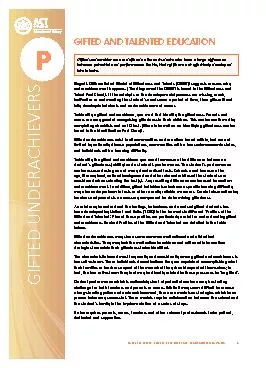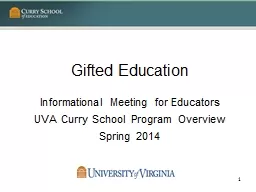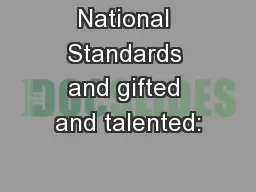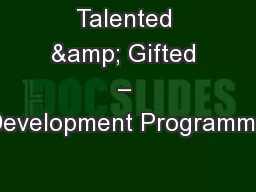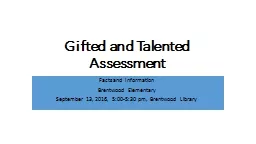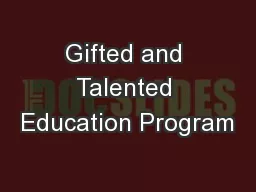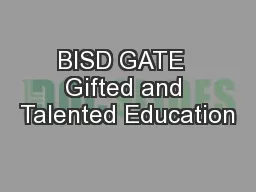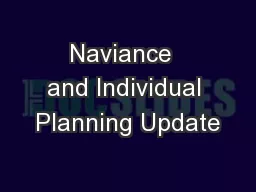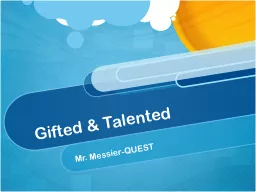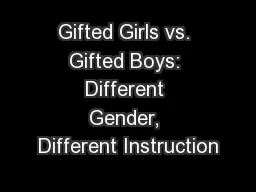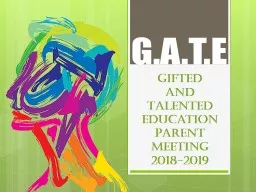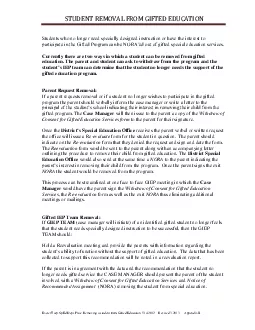PDF-GIFTED AND TALENTED EDUCATION
Author : olivia-moreira | Published Date : 2015-11-24
Gix00660074ed underachievers are dex00660069ned as those students who have a large dix00660066erence between potenx00740069al and performance that is their gix00660074s
Presentation Embed Code
Download Presentation
Download Presentation The PPT/PDF document "GIFTED AND TALENTED EDUCATION" is the property of its rightful owner. Permission is granted to download and print the materials on this website for personal, non-commercial use only, and to display it on your personal computer provided you do not modify the materials and that you retain all copyright notices contained in the materials. By downloading content from our website, you accept the terms of this agreement.
GIFTED AND TALENTED EDUCATION: Transcript
Download Rules Of Document
"GIFTED AND TALENTED EDUCATION"The content belongs to its owner. You may download and print it for personal use, without modification, and keep all copyright notices. By downloading, you agree to these terms.
Related Documents

